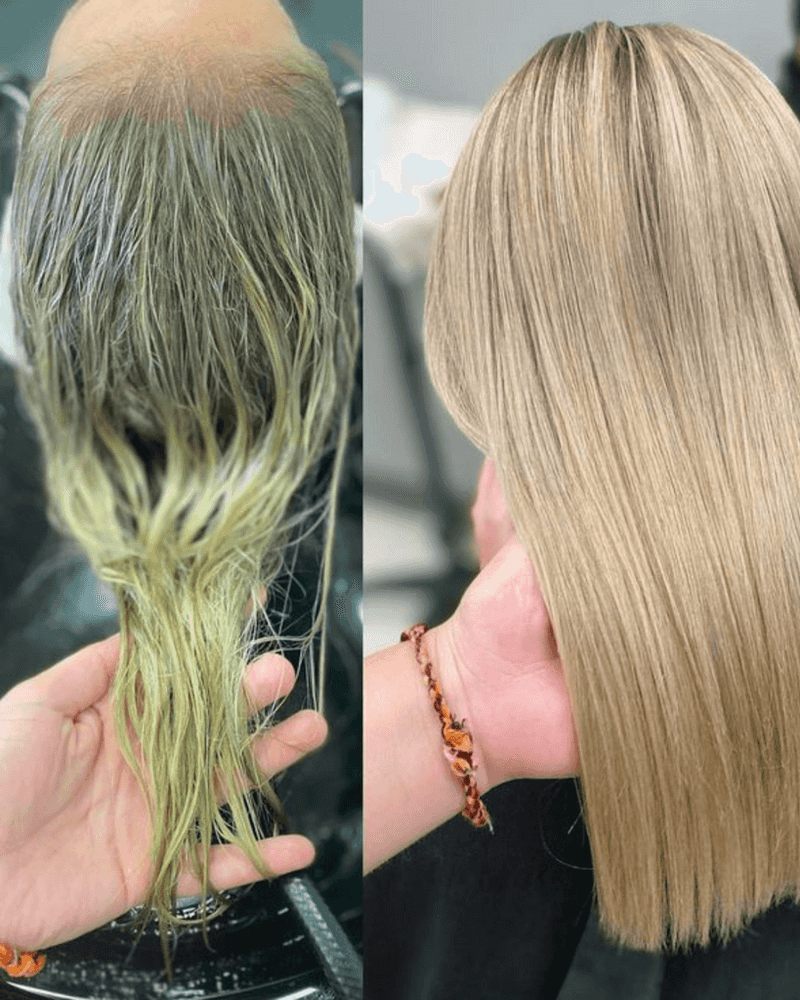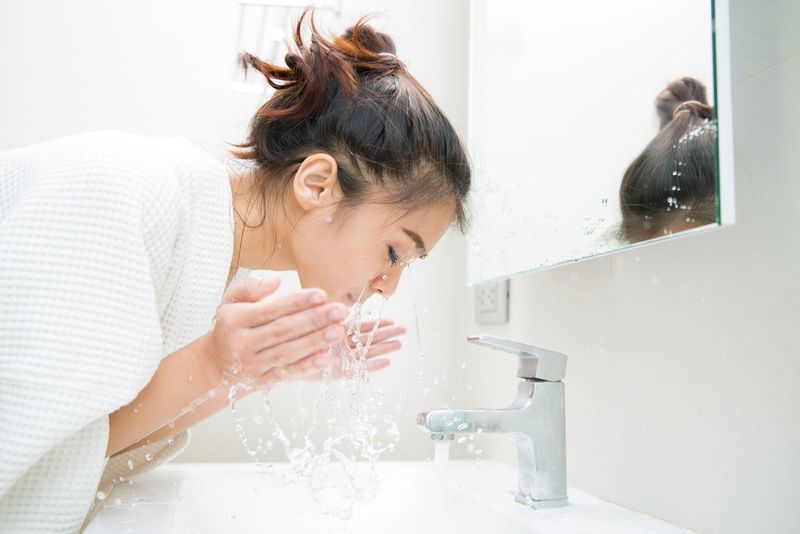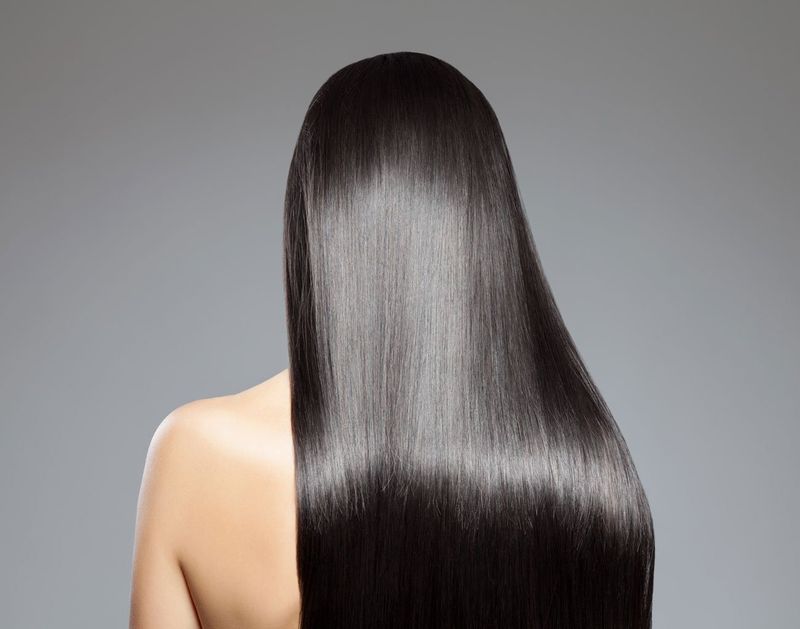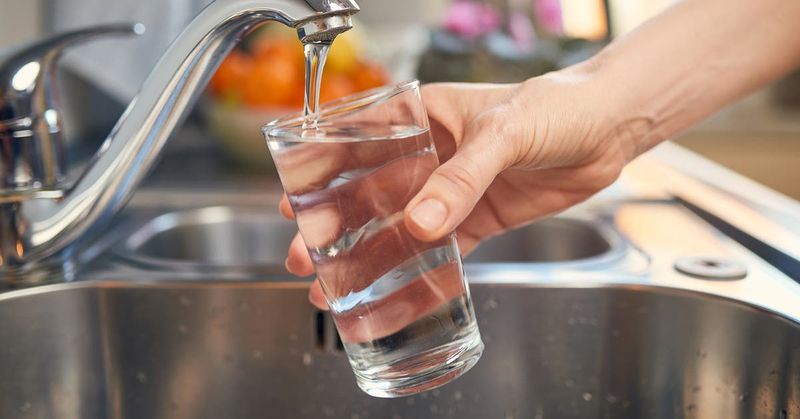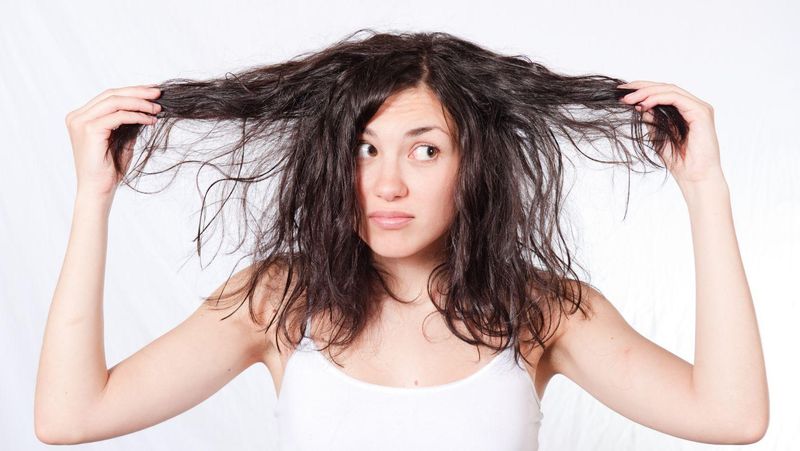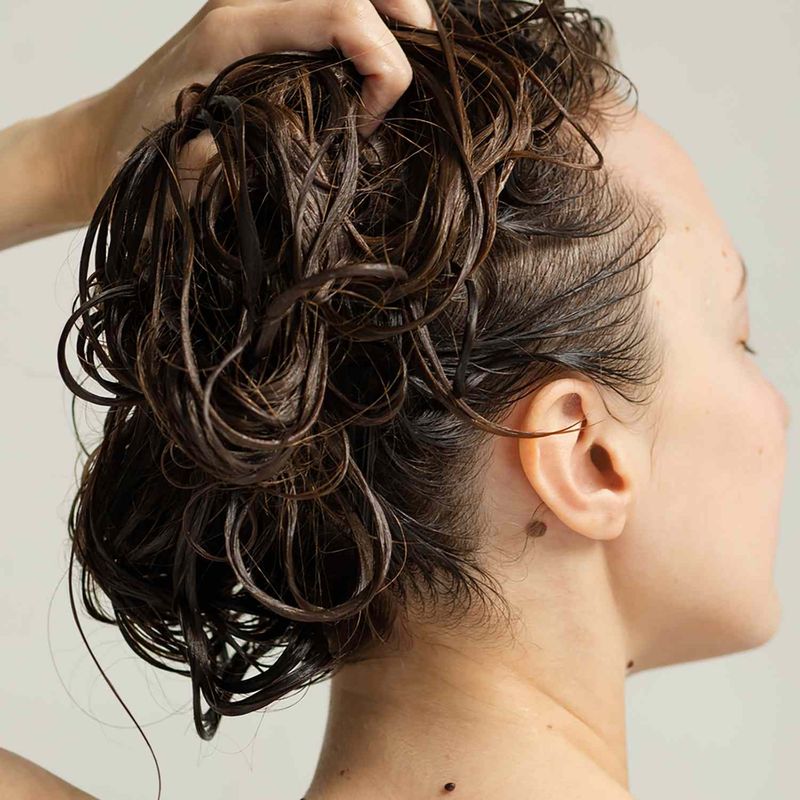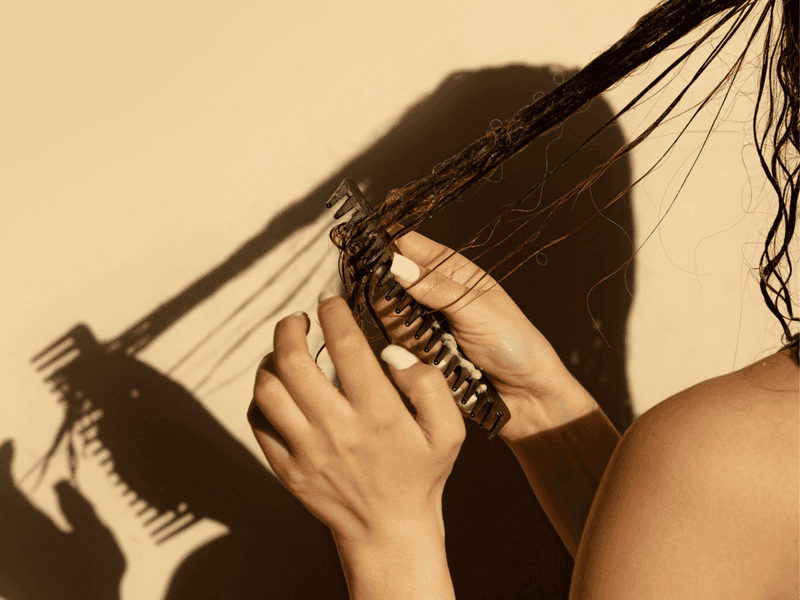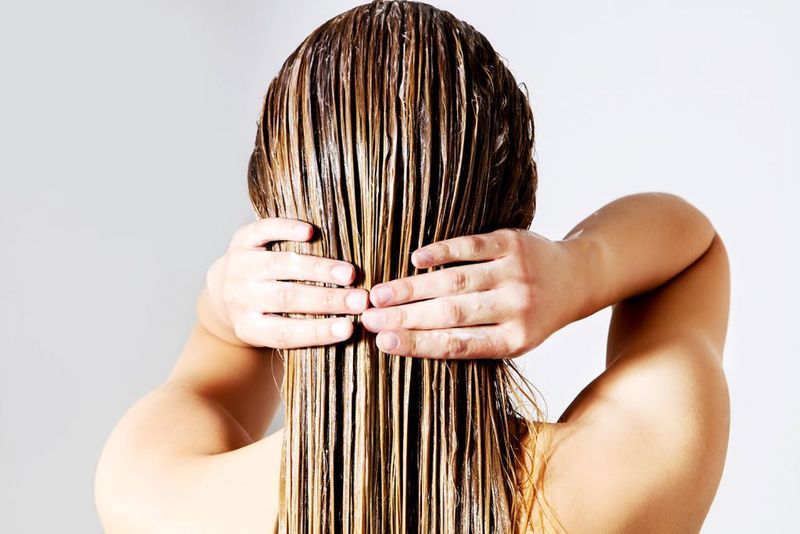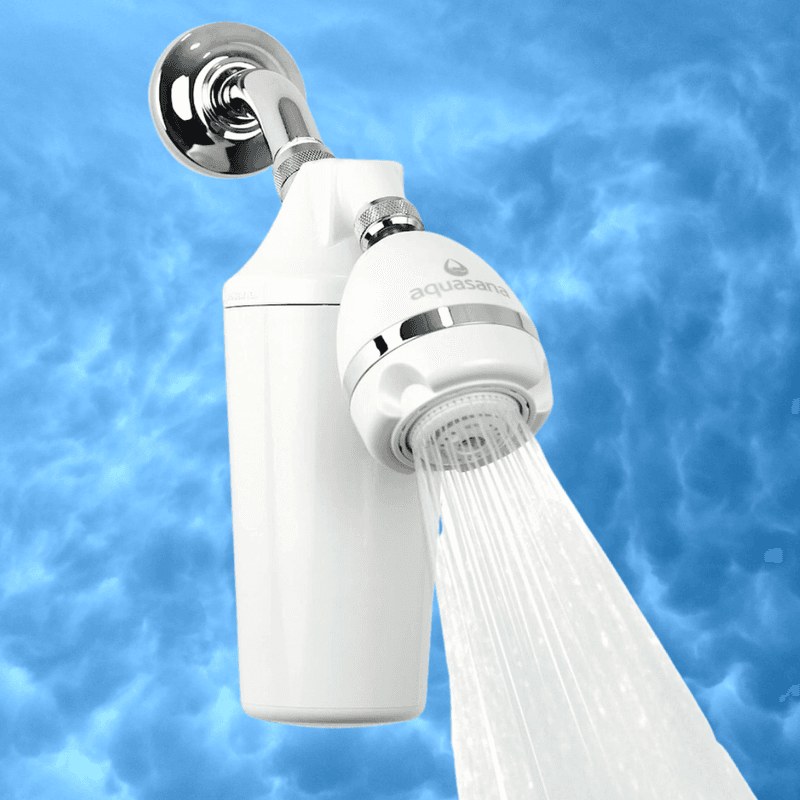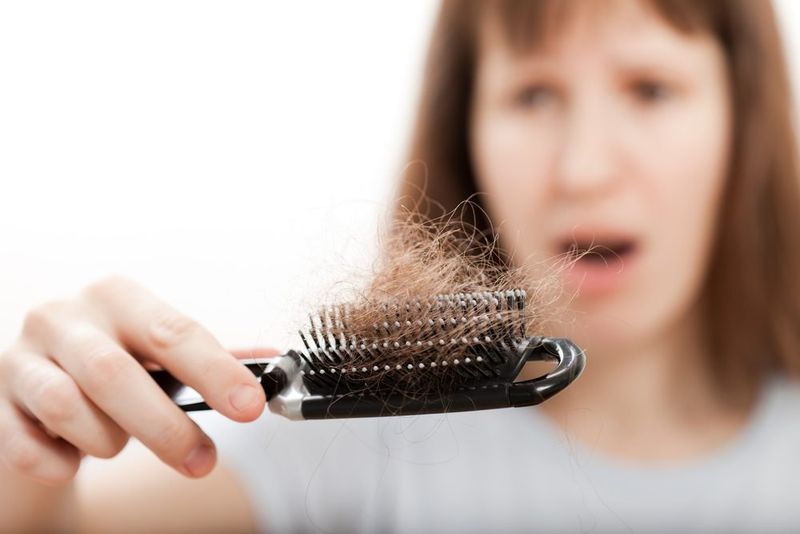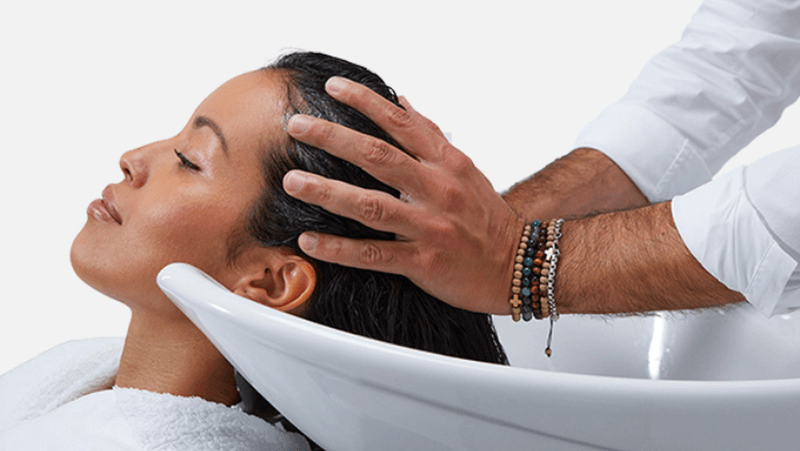Many women over 40 notice changes in their hair texture, volume, and shine without realizing a culprit might be flowing right from their faucets. Tap water contains minerals, chemicals, and impurities that can silently wreak havoc on aging hair, especially when hormonal changes already make strands more vulnerable. Understanding how your water affects your hair could be the missing piece in your beauty routine puzzle.
1. Hard Water’s Hidden Toll
Calcium and magnesium minerals in hard water build up on your hair shaft over time, making it impossible for moisture to penetrate. This mineral coating weighs down your already thinning hair and creates that frustrating dullness that no expensive shampoo seems to fix.
For women over 40, whose hair naturally produces less oil, this mineral buildup is particularly damaging. Your strands become increasingly brittle and prone to breakage.
A simple test: fill a clear bottle with tap water, add a few drops of liquid soap, and shake. If it’s cloudy rather than sudsy, you’ve got hard water affecting your hair.
2. Chlorine’s Aging Effects
Municipal water treatment facilities add chlorine to kill bacteria, but this powerful chemical doesn’t discriminate between germs and your hair’s natural proteins. Chlorine strips away your hair’s protective oils, particularly problematic for women over 40 whose scalps naturally produce less sebum.
Regular exposure leads to premature color fading – particularly devastating if you color your graying hair. The discoloration can turn blonde or highlighted hair greenish or brassy.
Chlorine also weakens the hair shaft, causing split ends and breakage that make achieving length nearly impossible, regardless of how many trims you get.
Related: -7 Straight-Hair Problems No One Talks About And 8 Easy Fixes That Shine
3. The pH Balance Problem
Most tap water has a pH between 6.5 and 8.5, significantly more alkaline than your hair’s ideal pH of 4.5-5.5. This pH mismatch forces your hair cuticles to open, leaving strands vulnerable to frizz, tangles, and damage – especially problematic for women over 40 whose hair is already becoming more porous with age.
When cuticles remain open, moisture escapes and environmental pollutants enter more easily. This creates a vicious cycle of dryness and damage.
The telltale signs include hair that never seems to get truly clean, excessive tangling after washing, and increased frizz regardless of styling products used.
4. Copper Pipes and Color Changes
Homes with copper plumbing can leach small amounts of copper into your water supply. For women with blonde, gray, or silver hair, this spells trouble! The metal particles attach to the hair shaft and create an unwanted greenish or brassy tint that’s particularly noticeable in lighter hair colors.
Older homes often have more corroded pipes, increasing the metal content in your shower water. This explains why your freshly colored hair might look different at home than it did leaving the salon.
A simple at-home test: fill a white cup with tap water and let it sit overnight. A subtle blue-green tint or metallic smell indicates copper presence.
5. The Fluoride Factor
Added to municipal water supplies to prevent tooth decay, fluoride accumulates on hair strands, creating a film that blocks moisture absorption. For women over 40 already battling hormonal dryness, this additional barrier can make hair feel perpetually parched despite using hydrating treatments.
Fluoride compounds also weaken protein bonds within the hair shaft. This leads to increased breakage during brushing or styling – particularly problematic as hair naturally thins with age.
The most telling sign is hair that feels rough and looks dull even immediately after conditioning treatments. Your expensive masks and oils can’t penetrate the fluoride barrier, making them essentially ineffective.
6. Seasonal Water Changes
Water treatment facilities adjust chemical levels seasonally, which explains why your hair might suddenly seem different despite using the same products. Spring runoff often means higher chlorine levels to combat bacteria, while summer drought conditions concentrate minerals in your water supply.
Many women notice their hair becomes dramatically drier or more brittle during certain months without connecting it to their tap water. These fluctuations hit aging hair particularly hard as it has less natural resilience.
Keeping a simple hair journal noting texture changes alongside seasons can reveal patterns. If your worst hair months consistently align with seasonal changes, your water might be the culprit rather than your products.
7. Hot Water Warnings
That steaming hot shower feels heavenly, but it’s secretly stripping your aging hair of essential oils. Water temperature above 100°F opens the cuticle layer of your hair, allowing moisture and natural proteins to escape. This creates a double whammy for women over 40 whose scalps already produce fewer natural oils.
Hot water also accelerates color fading by up to 40% – particularly problematic if you color your hair to cover gray. Those expensive salon visits aren’t lasting as long as they should!
The solution isn’t necessarily cold showers. Lukewarm water cleanses effectively without the damage, and a final cool rinse helps seal the cuticle, enhancing shine dramatically.
8. Well Water Mysteries
Rural homes with well water face unique hair challenges due to high iron content and sulfur compounds. Iron particles physically attach to the hair shaft, creating a rusty, reddish cast that’s particularly noticeable on lighter hair colors. This metallic buildup also increases friction between strands, leading to more breakage.
Sulfur compounds, recognizable by their distinctive “rotten egg” smell, bond with hair proteins. This creates that perpetual “dirty hair” feeling despite frequent washing – frustrating for women trying to maintain polished, professional appearances.
Well water users often notice white residue on shower walls – that same residue is coating your hair! Professional water testing can identify specific contaminants affecting your locks.
9. Moisture Barrier Breakdown
Tap water impurities gradually erode your hair’s natural lipid layer – the protective barrier that keeps moisture in and damage out. For women over 40 already experiencing hormonal changes that reduce natural oil production, this barrier breakdown accelerates visible aging of your hair.
The damage accumulates over decades of exposure. Even if you’ve recently moved to an area with problematic water, you’re seeing the effects on hair that might already have 40+ years of cumulative damage.
Symptoms include hair that absorbs products like a sponge yet feels dry hours later, increased static electricity, and ends that split faster than you can trim them. Your hair’s moisture barrier needs targeted repair, not just temporary coating products.
10. The Medication Connection
Many women over 40 take medications that make hair more vulnerable to water damage. Common prescriptions for blood pressure, cholesterol, and hormone replacement can alter your hair’s protein structure, making it more reactive to minerals and chemicals in tap water.
Certain medications also increase scalp sensitivity. The sulfates in your shampoo that never bothered you before might now cause irritation when activated by chlorinated water, creating a cycle of inflammation that weakens hair follicles.
Consult your doctor before changing medications, but consider timing your hair washing to avoid days when you take certain prescriptions. This simple schedule adjustment creates a buffer period when your hair is less reactive to water contaminants.
11. Filter Options Decoded
Not all shower filters target the specific water issues damaging your aging hair. Carbon filters excel at removing chlorine but do little for hard water minerals. Conversely, water softeners address mineral content but may replace it with sodium that leaves fine hair limp.
KDF filters use copper-zinc mineral processes to remove contaminants. These are particularly effective for women in urban areas with heavily treated municipal water, as they target the chlorine and heavy metals most damaging to colored or highlighted hair.
Vitamin C filters neutralize chlorine and chloramine through a chemical reaction rather than filtration. They’re ideal for women who color their hair, as they prevent the acceleration of color fading caused by these chemicals.
12. Post-Menopausal Vulnerability
Estrogen plays a crucial role in maintaining hair thickness and moisture retention. As levels decline after menopause, your hair becomes significantly more vulnerable to tap water damage. The protective lipid layer thins, allowing water contaminants deeper access to the hair shaft.
Many women notice a dramatic change in their hair’s response to the same water supply they’ve used for decades. This isn’t just aging – it’s the interaction between hormonal changes and environmental factors like your water quality.
The timeline varies, but typically 2-5 years post-menopause is when water damage becomes most apparent, even if you’ve never had issues before. This explains why suddenly changing your hair care routine becomes necessary despite using the same water source.
13. Travel Hair Transformations Explained
Ever notice how your hair looks amazing on vacation only to return to its problematic state once you’re home? The dramatic improvement isn’t just vacation relaxation – it’s directly related to different water compositions. This temporary transformation provides valuable clues about which specific water issues affect your hair type.
If your hair thrives in coastal locations, your home water likely has excessive mineral content that ocean destinations typically lack. Conversely, if mountain vacations give you great hair days, your home water might have pH imbalance issues that naturally alkaline mountain water corrects.
Keep a simple travel hair journal noting where your hair looks best. These observations can guide your choice of home water treatments or specialized products that mimic your “good hair” vacation spots.



